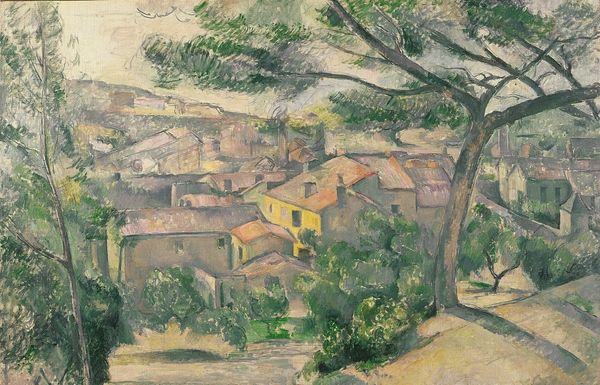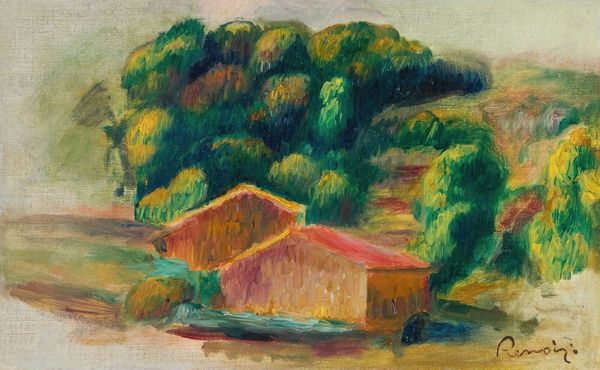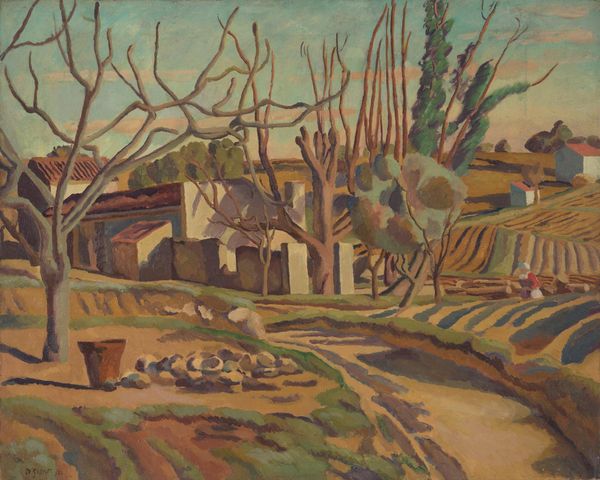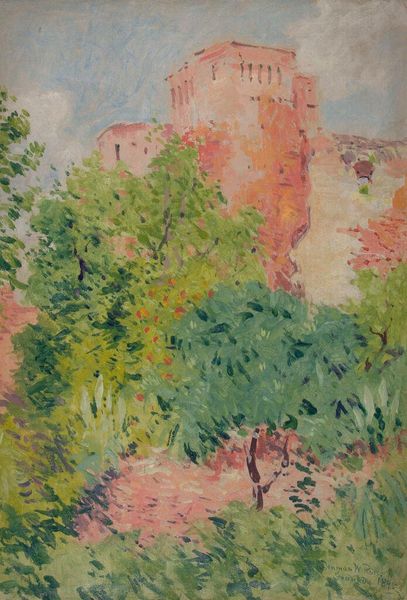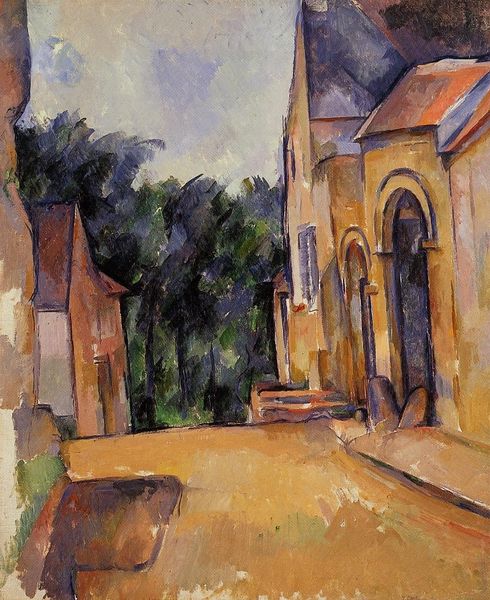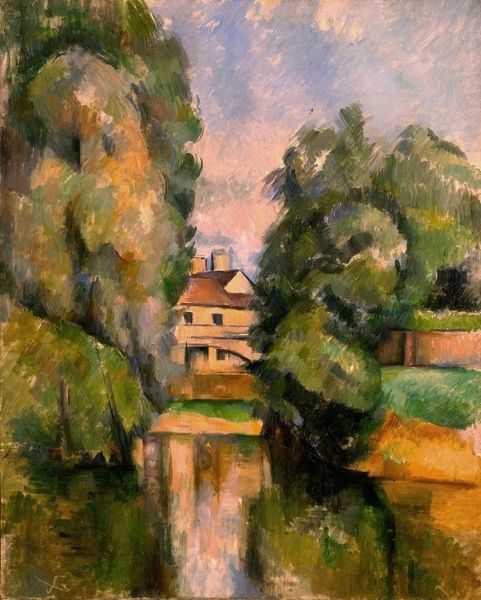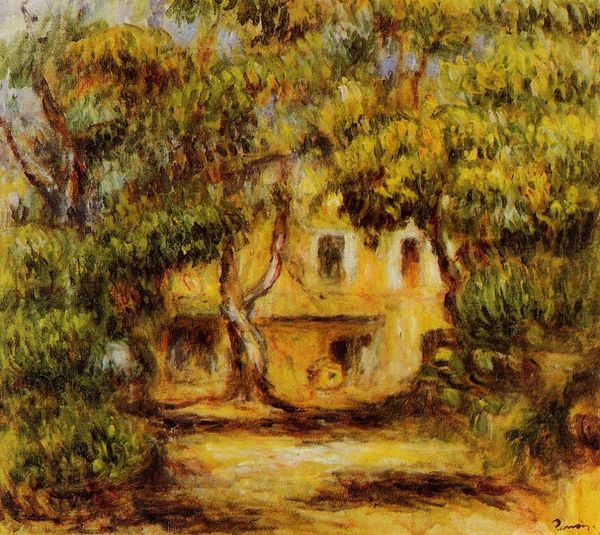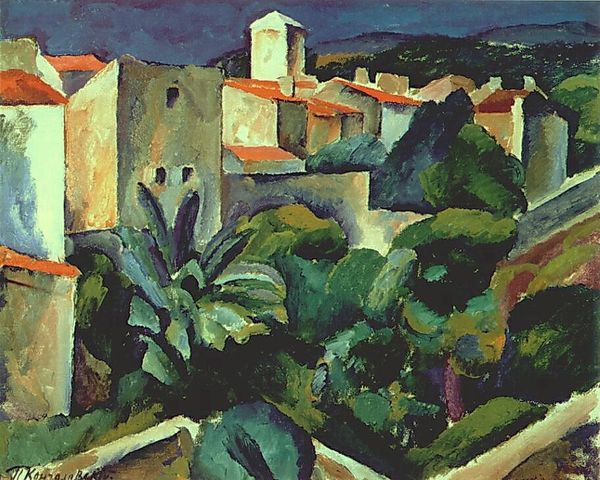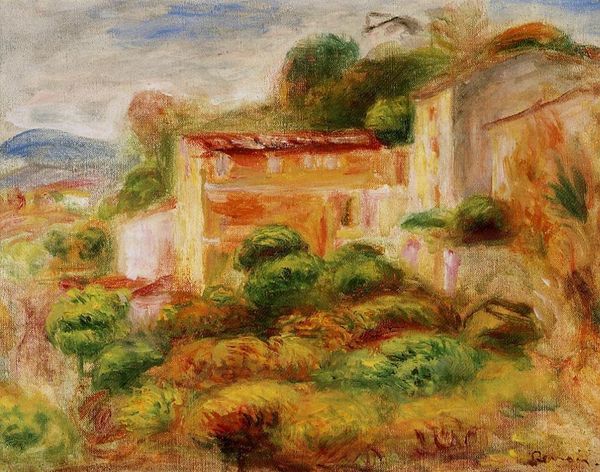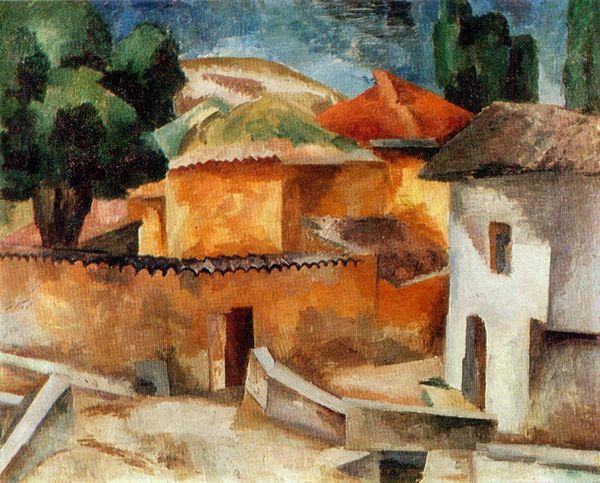
Copyright: Public domain
Paul Cézanne painted "Jourdan's Cottage" at an unknown date using oil on canvas. Here we see Cézanne’s attempts to come to terms with his native Provence, in France, a place he both loved and felt alienated from. Cézanne distanced himself from the urban art world, retreating to the countryside. He became a figure of the modern artist who stands apart, who finds artistic truth not in established institutions like the Academy, but in their own individual experience. "Jourdan's Cottage" and many other paintings became demonstrations of this new aesthetic ethos. The painting's broken brushstrokes and flattened perspective were a rejection of academic naturalism; his repeated emphasis on a limited number of motifs reflected the Symbolist movement's search for essential forms, thus, his style can be seen as commenting on the art institutions of his time. To understand Cézanne, we can look at exhibition histories, dealer records, and critical reviews to better understand the social conditions that shaped his art. Art’s meaning is contingent on its historical and institutional context.
Comments
No comments
Be the first to comment and join the conversation on the ultimate creative platform.

